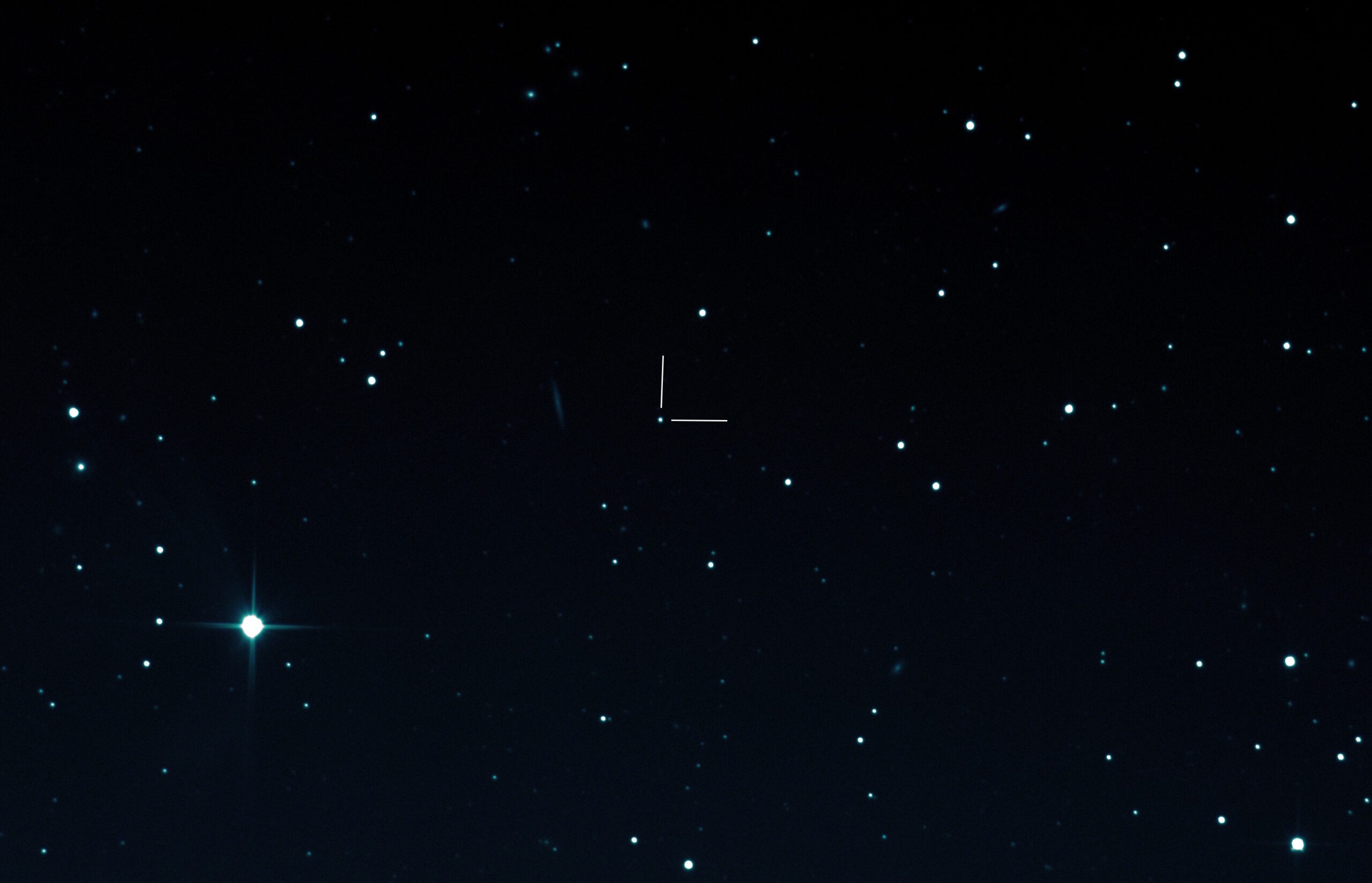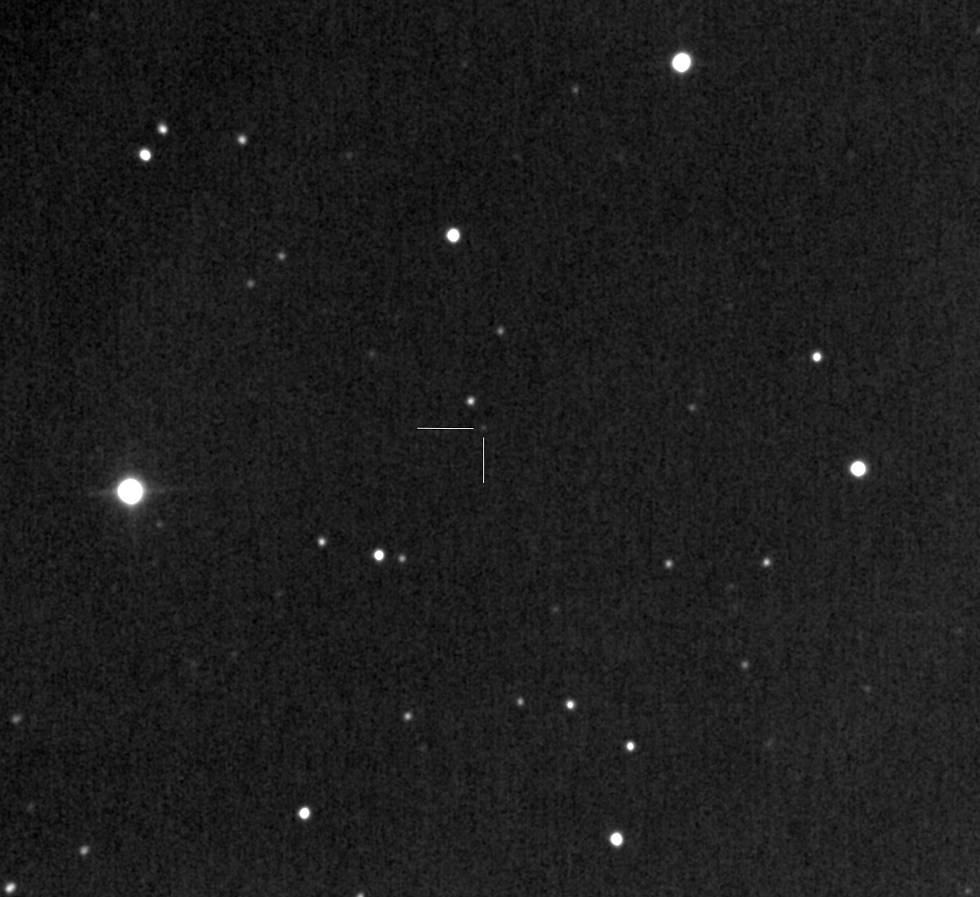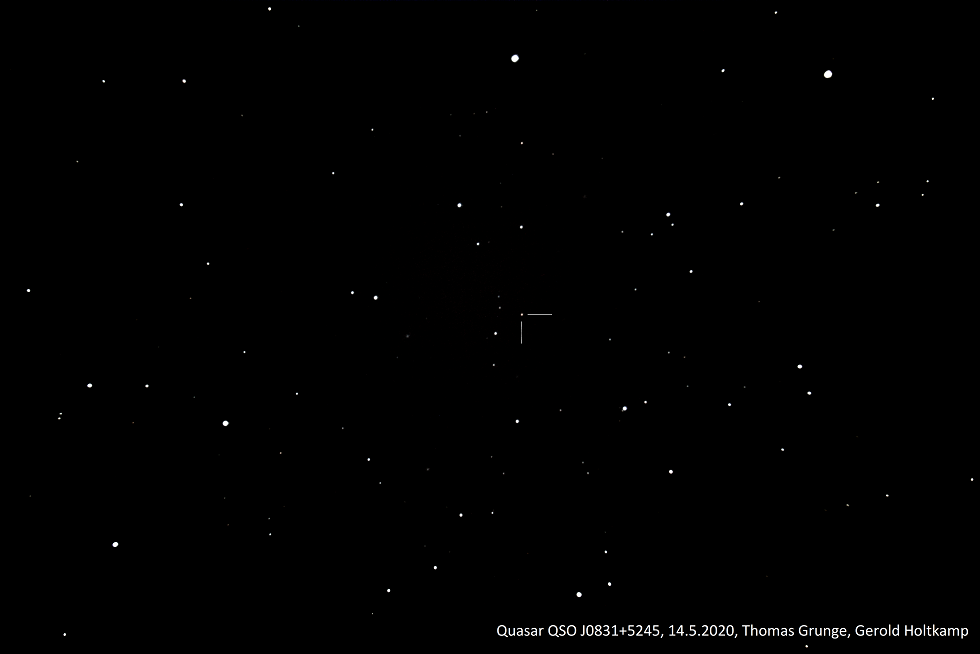Category: Quasars
-

TON 618 – the giant
On April 26, 2025, I took a photograph showing an area on the border between the constellation Canes Venatici and the constellation Coma Berenices. It's probably the most unspectacular photograph I've ever taken. However, among the recognizable stars and objects is my personal record holder.
-

Mirage in the Sky
The observation of the three quasars Q0957+561, RXJ0921+4529, and SDSS J1029+2623 is described. In these cases, multiple images are generated by galaxies or galaxy clusters in the foreground, which act as gravitational lenses. It is shown that these images can be resolved even at an urban observation site.
-

Observation of the quasars QSO J 1723+2243 and SPIT J17210+6017
The observation of two very distant quasars is described. These are extremely faint objects that can only be imaged with powerful telescopes. A very light-sensitive camera is also required.
-

The Twin Quasar QSO 0957+561AB
The moon had already risen at night at 10:30 p.m. CET on March 2, 2021, but was still low on the horizon. With 83% illuminated pane, it would soon become a fairly bright "lantern". But the author was not deterred by this.
-

Quasar J0209+0517
The image of the quasar J0209+0517 is described. At first, nothing can be seen on individual shots. The addition of several shots brings the desired success.
-

Almost at the "edge of the universe" – the quasar QSO J0831+5245
Thomas Grunge and Gerold Holtkamp imaged the quasar QSO J0831+5245 on May 14th 2020 with the Cassegrain telescope (60 cm mirror diameter, 746 cm focal length) of the NVO Observatory. Its speed alone is record-breaking: 276,000 km/s (according to Simbad). Its light was about 12.05 billion (!) light years on its way until it reaches us on Earth.